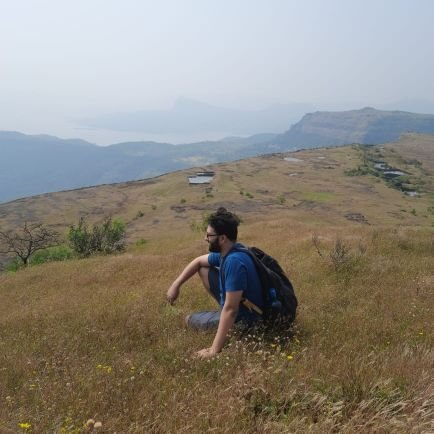
Shreya Bhattacharya
@ShreyaBEcon
Followers
221
Following
524
Media
4
Statuses
106
Econ PhD @UH. Former @UNUWIDER Visiting PhD Fellow. Interested in development, politics and history.
Alexandria, VA
Joined June 2011
Excited to see my solo-authored paper featured by @JDevStudies! Sharing key insights and visual snapshots below. #GenderEquality #India @UN_Women @UNICEFIndia @ILO @unwomenindia [1/9]
New in @JDevStudies: Women in 🇮🇳 are more likely to wake up first & eat last, facing morning burdens that impact health & well-being. Economic progress alone isn’t enough. Policy change is needed. Read by more➡️: https://t.co/IuwRBplnI4
@UdayanRathore
2
10
33
New research by @ShreyaBEcon & I as part of a larger project examining the effects of mandatory retirement ages in India on post-retirement outcomes: health, income & savings. Statewise retirement ages vary from 58-62, central govt is different; private sector too. 🧵🧵
India’s ageing population is growing fast—but pensions aren’t keeping up. In our new conference blog @ShreyaBEcon and @shreyaseedas explore how state-by-state pension gaps are deepening inequalities in retirement, work, and wellbeing. 👉 https://t.co/DLL443v9F6
#WIDERDevConf2025
3
4
20
India’s ageing population is growing fast—but pensions aren’t keeping up. In our new conference blog @ShreyaBEcon and @shreyaseedas explore how state-by-state pension gaps are deepening inequalities in retirement, work, and wellbeing. 👉 https://t.co/DLL443v9F6
#WIDERDevConf2025
0
3
7
In preparation for the Catalyzing Cooperative Intra-household Mobile Technology use Endline study, we conducted the pilot in Zomba to test the study tools. IPOR is collaborating with the college of William and Mary in Virginia and prestigious university partners in USA.
0
3
9
The Institute's Community Change journal is pleased to share a recent publication entitled, "Communication of Uncertainty in AI Regulations" by Aditya Sai Phutane. https://t.co/N3FYOeKQGs
1
2
3
This piece is an attempt to highlight directions for future policy design to increase uptake of sanitary menstrual hygiene products. We thank @thewire_in for their editorial support and helping us reach a wide audience.
0
0
0
There have been schemes both at the Centre and state levels to promote menstrual hygiene. However, SMP provided under these schemes have sometimes been poor quality, and additional pandemic induced lockdowns made many women revert back to cloth usage.
1
0
0
The SMP gap hence is less likely a result of socioeconomic factors, and more likely due to differences between urban and rural areas. A plausible explanation for the gap is the lack of access to SMP in remote areas.
1
0
0
The urban-rural gap in SMP usage is also not explained by differences in women’s autonomy within their homes and communities. Even in households where women have the highest autonomy levels, 70% of urban women only use SMP, whereas only 45% of rural women exclusively use SMP.
1
0
0
Can this gap be explained by rural-urban differences in gender norms and women's independence? We construct an autonomy index, that includes women’s role in decision-making, their ability to travel alone, access to a phone and property ownership, to investigate.
1
0
0
Maybe more education leads to women shifting towards more SMP? That does not seem to be the case: the urban-rural SMP usage gap is the widest among women with secondary education!
1
0
0
Figure 2 shows that the SMP usage gap persists at all wealth levels. We should see this gap reducing for wealthier households. On the contrary, the urban-rural gap in SMP usage is the widest for the richest 1/5th of households!
1
0
0
Does SMP usage vary by women's residence? We find that is indeed the case: the exclusive use of SMP is higher in urban areas (~67%) than in rural areas (~42%). Is this because women in urban areas are more richer, more educated or simply have more freedom to make decisions?
1
0
0
The answer: no! Only 59% of the sample in Kerala uses only SMP, despite it having the highest score on the Gender Development Index in the country. Gujarat is the fourth most prosperous state (based on GDP), and has less than 50% of women using only SMP.
1
0
0
Figure 1 shows substantial state-wise variation in the exclusive usage of SMP. Do states with richer, more educated and independent women have higher exclusive usage of SMP?
1
0
1
Sanitary menstrual products (SMP) include locally-prepared pads, sanitary napkins, menstrual cups, or tampons. 47% of married women between the ages of 15 and 24 only use SMP, while 23% only use cloth. Nearly 29% of the sample use both SMP and cloth.
1
0
1
To mark #MHDay 2023, @MadhulikaKhanna and I wrote this piece on menstrual hygiene management in India. What explains the gap in usage of sanitary menstrual products? A short 🧵 with highlights from NFHS-5 (2019-21):
Is the simple act of managing menstruation – hygienically and with dignity – a reality for women in India? Madhulika Khanna and Shreya Bhattacharya took stock of menstrual hygiene management among young married women in India. #Women
https://t.co/BgUZKBu21z
1
7
15
This new #WIDERWorkingPaper by @shreyaseedas (#WIDERAlumni) and @shatanjayafinds that the 2001 Gujarat earthquake reduced the age at marriage for both men and women and decreased the likelihood of women marrying into wealthier households. Read more: https://t.co/CPQQPBAQjq
0
3
5
This was such an engaging conversation on how natural disasters can influence marriage decisions! Great work by @shreyaseedas and @shatanjaya!
I went from being a non-podcast person to being ON a podcast 🙀. Presenting my chat with @BansariKamdar for the Bangalore International Centre, featuring work with @shatanjaya on disasters & their impact on marriages. Impostor syndrome elevated! https://t.co/ITBX6SR5gC
1
0
4
Passengers & airlines have to be a bit more cautious about overhead bin items. Today while deplaning, passenger opens the bin & bam falls a duty-free liquor bottle on my head when I now have a dent. Yes, it was that heavy. @lufthansa:"Well we do tell passengers to be careful" 1/n
3
10
14






